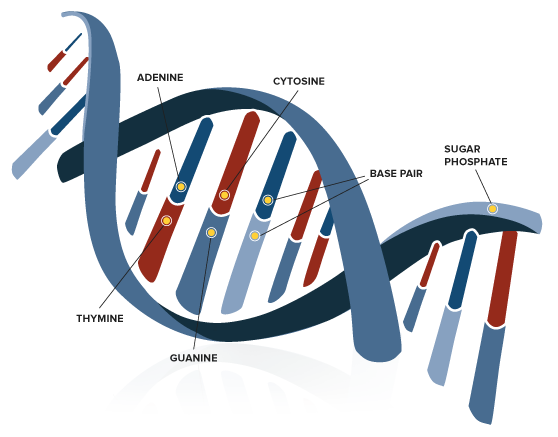
Acids and bases play a vital role in both daily life and the scientific world. They are fundamental to chemical reactions, influencing everything from biological processes to industrial manufacturing. By understanding their properties, reactions, and classifications, we can gain insight into their importance in chemistry and the environment.
In this article, we will explore the definitions, characteristics, and real-life applications of acids and bases. Additionally, we will dive into the pH scale, a crucial tool for measuring their strength and impact.
What Are Acids?
Acids are substances that, when dissolved in water, release hydrogen ions (H⁺). The release of these ions is what gives acids their characteristic properties. Acids tend to have a sour taste, can corrode metals, and turn blue litmus paper red. These substances are prevalent in nature and are crucial in many chemical processes.
Some common examples of acids include hydrochloric acid (HCl), which is found in stomach acid and plays a key role in digestion, and citric acid, present in citrus fruits like lemons and oranges. Acids are also used extensively in industrial applications, such as in the production of fertilizers, plastics, and pharmaceuticals.
Properties of Acids
Acids have several defining characteristics. The primary property is their ability to donate protons (H⁺ ions) in a reaction. This is known as being a proton donor. Acids are generally corrosive to metals and skin due to their reactivity with various substances. When acids react with metals, they release hydrogen gas, as seen in reactions between hydrochloric acid and zinc.
Additionally, acids have a low pH value, typically below 7 on the pH scale, indicating their high concentration of hydrogen ions. Strong acids like sulfuric acid (H₂SO₄) and nitric acid (HNO₃) are commonly used in laboratories and industrial processes due to their powerful reactivity.
What Are Bases?
Bases, on the other hand, are substances that accept hydrogen ions or release hydroxide ions (OH⁻) in water. Bases tend to have a bitter taste and a slippery feel. They turn red litmus paper blue, which is a key indicator used to identify basic substances. Bases are the chemical opposite of acids and play an equally important role in various chemical reactions.
A common example of a base is sodium hydroxide (NaOH), also known as lye, which is used in soap making and as a powerful cleaning agent. Another example is ammonia (NH₃), often used in household cleaners and fertilizers. Bases are widely used in industry, agriculture, and everyday cleaning products.
Properties of Bases
Bases exhibit several properties that distinguish them from acids. One of the key properties is their ability to accept protons or donate hydroxide ions in a reaction, making them proton acceptors. Bases tend to be caustic and can cause burns, especially in concentrated forms, such as sodium hydroxide or potassium hydroxide.
Bases have a high pH value, typically above 7 on the pH scale, which indicates a lower concentration of hydrogen ions and a higher concentration of hydroxide ions. Strong bases, like calcium hydroxide (Ca(OH)₂), are frequently used in construction for making cement and mortar. These properties make bases essential in both commercial and scientific settings.
The pH Scale: Measuring Acidity and Basicity
The pH scale is a logarithmic scale that measures the acidity or basicity of a substance. It ranges from 0 to 14, with a pH of 7 considered neutral. Substances with a pH below 7 are acidic, while those with a pH above 7 are basic. The pH scale is essential for chemists to understand the strength of acids and bases and how they will react in different environments.
A lower pH value, such as 1 or 2, indicates a strong acid like hydrochloric acid, whereas a higher pH, such as 12 or 13, indicates a strong base like sodium hydroxide. The pH scale is used in various fields, from agriculture (where soil pH affects plant growth) to medicine (where blood pH must be regulated).
Importance of pH in Everyday Life
The pH of substances we encounter daily has a significant impact on our health and environment. For example, the pH of drinking water is usually maintained between 6.5 and 8.5 to ensure it is safe for consumption. Similarly, the pH of soils is crucial for determining which plants can thrive in a given area. Some plants, like blueberries, prefer acidic soils, while others, like spinach, grow best in neutral or slightly basic soils.
In the human body, the pH of blood is tightly regulated at around 7.4. Any significant deviation from this value can lead to serious health problems. Acidosis (too much acidity in the blood) or alkalosis (too much alkalinity in the blood) can cause symptoms such as confusion, fatigue, and even life-threatening conditions if left untreated.
Acid-Base Reactions: Neutralization
One of the most important types of reactions between acids and bases is neutralization. In a neutralization reaction, an acid reacts with a base to produce salt and water. This process is essential in various real-world applications, such as in the treatment of acidic soils in agriculture and in the manufacturing of various consumer products.
For instance, when hydrochloric acid (HCl) reacts with sodium hydroxide (NaOH), the result is sodium chloride (NaCl), which is common table salt, and water (H₂O). This reaction is represented by the equation: HCl+NaOH→NaCl+H₂O
Applications of Neutralization
Neutralization reactions have wide-ranging applications in industry and environmental management. For example, acid rain, which is caused by the release of sulfur dioxide (SO₂) and nitrogen oxides (NOₓ) into the atmosphere, can be harmful to ecosystems. To mitigate the effects, bases like limestone (calcium carbonate) are used to neutralize acidic bodies of water.
In medicine, neutralization is also employed to treat conditions like acid indigestion. Antacids, which are mild bases, neutralize excess stomach acid, providing relief from heartburn and discomfort. These real-life applications highlight the importance of understanding acid-base reactions.
The Importance of Acids and Bases
Acids and bases are fundamental components of chemistry, essential to many natural and industrial processes. From the food we eat to the medicines we take, these substances affect every aspect of life. Their properties, reactions, and the ability to measure their strength using the pH scale make them critical for scientific study.
Understanding the differences between acids and bases, as well as their applications, is crucial for anyone interested in chemistry or its practical applications in the world around us.



















